| | |
| Industry | Manufacturing |
|---|---|
| Founded | 1921 |
| Founder | Joseph Lamy Émile Akar |
| Defunct | 1939 |
| Headquarters | Saint-Denis (France) |
Key people | André Morel |
| Products | Cars |
The Amilcar was a French automobile manufactured from 1921 to 1940.
| | |
| Industry | Manufacturing |
|---|---|
| Founded | 1921 |
| Founder | Joseph Lamy Émile Akar |
| Defunct | 1939 |
| Headquarters | Saint-Denis (France) |
Key people | André Morel |
| Products | Cars |
The Amilcar was a French automobile manufactured from 1921 to 1940.
Amilcar was founded in July 1921 by Joseph Lamy and Emile Akar. [1] The name "Amilcar" was an imperfect anagram of the partners' names. [1] The business was established at 34 rue du Chemin-Vert in the 11th arrondissement of Paris. [1] However, Amilcar quickly outgrew their restricted city-centre premises, and during the middle part of 1924 the company relocated to Saint-Denis on the northern edge of the city. [1]
The original Amilcar was a small cyclecar. Designed by Jules Salomon and Edmond Moyet, it bore a striking resemblance to the pre-war Le Zèbre. The vehicle was first exhibited at the Paris Motor Show in October 1921. [1] The business was a leading beneficiary of a cyclecar boom, prompted by a government initiative which held out the promise of a reduced rate of annual car tax, fixed at 100 francs per year, for powered vehicles weighing no more than 350 kg (dry weight, without fuel or water or such extras as a spare tyre/wheel), providing seating for no more than two people and powered by an engine of not more than 1100 cc. [1] Once a vehicle exceeded these limits it ceased to be a cyclecar and was instead officially designated a voiturette. [1]
The 4-cylinder, 903cc Amilcar CC appeared in 1922, with a wheelbase of just 2,320 mm (91 in). [1] The CC subsequently became available in two further versions; the Amilcar C4 was a slightly longer sports car, while the CS, introduced in 1924, [1] was a brisker sports version with the engine size increased to 1004 cc. [1] The side-valve engine had splash lubrication, and came with a three-speed gearbox. The most famous model of all was the CGS "Grand Sport" of 1924; this featured a 1074 cc sv engine and four-wheel brakes. This in turn evolved into the more sporty CGSS "Grand Sport Surbaissé". These models were built under license in Germany (as the Pluto ) and in Austria (as the Grofri) and in Italy (as Amilcar Italiana). The marque entered automobile racing in the mid-1920s with a batch of supercharged double overhead camshaft 1100 cc six-cylinder cars that used a roller bearing crankshaft in the full racing version; these vehicles were also available with plain metal bearings, driven by famous race driver André Morel.


During the later 1920s the company expanded out of its original comfort zone of small economical cars: the results were mixed. The founders, Akar and Lamy, becoming less involved with the management of the business, were persuaded to conclude, in 1931, a business agreement with André Briès and Marcel Sée. [1] Sée already knew Amilcar from the inside, having in January 1929 been dismissed from a position involved in management of the company. [1] The early 1930s were years of economic crisis in France, and at the end of 1933 a company owned by Briès and Sée, called "Sofia" (Societe financiere pour l'automobile), took effective control of Amilcar, which nevertheless continued to function under its existing name. [1]


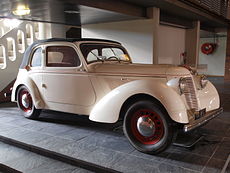
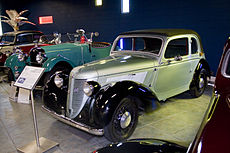
From 1928 the company offered a light touring car; called the "M-Type", it featured a side-valve 1200 cc engine and was launched in 1928. It was followed by the M2, M3, and M4 versions. The M-type and its successors continued to be produced through the ensuing years of financial difficulty, offered for sale till 1935, though production probably ended in 1934. 1928 saw the introduction of a straight eight, which was built with an ohc 2.3-liter engine. This, the C8, proved unreliable, and soon disappeared with only a few hundred produced.
The acquisition of Amilcar by "Sofia" in 1933 did not in itself resolve the financial pressures. At the end of August 1934, still faced with disappointing sales volumes, the factory at Saint-Denis closed for the last time, as management struggled to save the business. A new model was clearly needed and in October 1934 the company presented the new 2-litre (12CV) Amilcar Pégase powered by a 4-cylinder, ohv 2150 cc engine supplied by Delahaye. [2] There was also a competition version of the Pégase with a 2490 cc (14CV) engine. [2] By October 1935, the smaller Amilcar models having been discontinued, the Pégase, produced under much reduced circumstances at premises in Boulogne-Billancourt, was the only Amilcar model listed. [2]
Recognising the impossibility of sustaining the Amilcar business with a single model, but unsure of how to finance or produce another, management turned to Hotchkiss which had recently taken a large shareholding in "Sofia", Amilcar's holding company. [2] Hotchkiss had problems of their own at this time, their hugely lucrative armaments business having recently been nationalised by the left-wing Blum government, while their middle-market automobile business was under increasing pressure as volume automakers became more effective in pushing their own ranges upmarket with models such as the Peugeot 402 and the Citroën Traction. [2] Henry Mann Ainsworth, the Automobile Director at Hotchkiss, had already been presented, by the high-profile engineer Jean-Albert Grégoire, with a promising prototype (at that stage based on an Adler chassis) for a lightweight 7CV category, small, technically advanced family car. [2] It was agreed that the automotive businesses of Hotchkiss and Amilcar would be merged and the prototype would be developed into an Amilcar model that would become the Amilcar Compound. [2]
The front-wheel-drive Amilcar Compound was technically advanced in design for its era, featuring a monocoque frame made of a light alloy and independent suspension all around. Its engine at launch was a four-cylinder side-valve unit of 1185 cc. [3] The Compound's ambitious use of aluminium in its body structure and its front-wheel-drive configuration meant that production got off to a slow start, and although it was launched in October 1937, 584 of the 681 passenger cars produced date only from 1939, with a further 64 produced during the early months of 1940, before the German invasion of May/June 1940 effectively ended civilian automobile production in the Paris region. [4] Production prototypes for an upgraded Compound with an OHV 1340 cc engine were running by the summer of 1939, and this version was scheduled for an October launch at the 1939 Paris Motor Show, but the motor show was cancelled and the launch was postponed – as matters turned out indefinitely – due to the intervention of war which France (and Britain) declared against Germany in early September 1939. [4]
Production of the Amilcar was not resumed after World War II.



Isadora Duncan's fondness for flowing scarves was the cause of her death in 1927 in an automobile accident in Nice, France. The famed American dancer was the passenger in an Amilcar CGSS [9] when her silk scarf became entangled around the open-spoked wheels and rear axle, breaking her neck. [10]

Matford was a French automotive manufacturer established as a joint venture in 1934 by local firm Mathis and US-based Ford Motor Company. The name Matford derived from both companies' names. The company ceased activities in 1940.
Tracfort was a short lived French automobile manufacturing venture that lasted from 1933 till late in 1934.

The Paris Motor Show is a biennial auto show in Paris. Held during October, it is one of the most important auto shows, often with many new production automobile and concept car debuts. The show presently takes place in Paris expo Porte de Versailles. The Mondial is scheduled by the Organisation Internationale des Constructeurs d'Automobiles, which considers it a major international auto show.

The Peugeot 403 is a mid-size car manufactured and marketed by Peugeot between May 1955 and October 1966. A total of 1,214,121 of all types, including commercial models, were produced, making it the first Peugeot to exceed one million in sales.

The Renault Frégate is an executive saloon car produced by the French automaker Renault between 1951 and 1960. Estate variants, the Renault Domaine and the Renault Manoir, were introduced in 1956 and 1958 respectively.
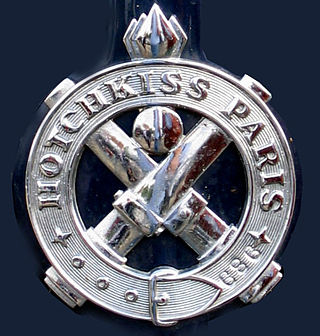
Automobiles Hotchkiss manufactured luxury cars in Saint-Denis, Paris between 1903 and 1955 and trucks between 1936 and 1970. It was a subsidiary of the French company Hotchkiss et Cie. The badge for the marque showed a pair of crossed cannons, evoking the company's history as an arms manufacturer. Hotchkiss also briefly built cars under the Hotchkiss Grégoire brand after the war. Hotchkiss went through a number of mergers and takeovers after the war and the brand disappeared in the 1970s; its successor companies went on to eventually form the partially state-owned Thales Group.

Donnet was a French manufacturing company of the early twentieth century. Founded as Société des Établissements Donnet-Denhaut by Jérôme Donnet and François Denhaut at Neuilly-sur-Seine in 1914, the firm manufactured a highly successful line of patrol flying boats for the French Navy. The company became known simply as Donnet after designer Denhaut left it in 1919, but did not continue to build aircraft for long afterwards.
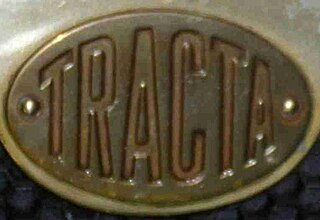
Tracta was a French car maker based in Asnières, Seine, that was active between 1926 and 1934. They were pioneers of front-wheel-drive vehicles.
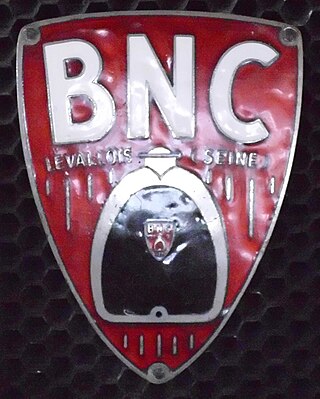
Bollack, Netter, et Cie(French: Bollack Netter et compagnie), more commonly known as B.N.C., was a small French automobile company in Levallois-Perret, situated on Avenue de Paris 39.

Corre La Licorne was a French car maker founded 1901 in Levallois-Perret, at the north-western edge of central Paris, by Jean-Marie Corre. Cars were produced until 1947.

The Delahaye VLR was a four-wheel-drive passenger vehicle clearly inspired by the Jeep and first presented, after an unusually long gestation, by Delahaye during the Summer of 1950. At a time when the luxury car market had been driven into freefall by a combination of government taxation policy and the depressed state of the postwar economy, the VLR was critical in keeping alive the company that produced it during the early 1950s.
Le Dauphin was a French auto maker established in the 3rd arrondissement of Paris by André L. Dauphin. The company first presented a small two-seater cyclecar in the spring of 1941; production ended in 1942.

The Panhard et Levassor Dynamic is a large car introduced by the French auto-maker Panhard et Levassor as a replacement for the company’s CS model at the Paris Motor Show in October 1936.

The Amilcar M is a mid-sized car, initially in the 7CV car tax band, made between 1928 and 1935 by the French Amilcar company. Most of the cars were delivered with a boxy four door “berline” body characteristic of the late 1920s.
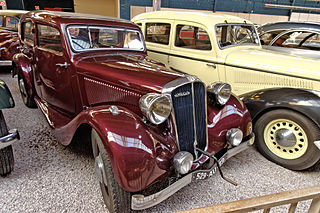
The Amilcar Pégase is a mid-sized car made between 1934 and 1937 by the French Amilcar company. The 2150 cc four-cylinder engine placed it in the 12CV car tax band. Other engine sizes, including a 2490 cc (14CV) unit developed in-house, were also listed.

Sizaire Frères was a French automobile manufacturer established by the brothers Maurice (1877–1970) and Georges Sizaire (1880–1924) in 1920, and producing cars between 1923 and 1929.

The Nervastella is a large automobile constructed by Renault between 1930 and 1937. It was used as a state car and pictures of the president of the French Republic sitting in a Nervastella can therefore be seen in newsreels from the mid-1930s.
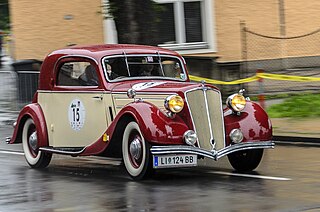
The Salmson S4 is a mid-size executive-level car introduced as the Salmson S4 C by Société des Moteurs Salmson in Autumn 1932. It was the manufacturer's principal and often sole model for the next twenty years.
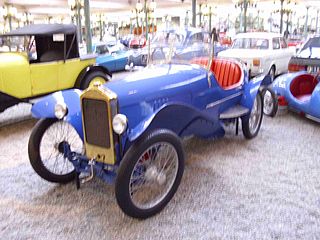
Sénéchal was a French automobile manufacturer between 1921 and 1929.
Raymond Siran, Cyclecars D'Yrsan was a French manufacturer of automobiles in the cyclecar class.
![]() Media related to Amilcar at Wikimedia Commons
Media related to Amilcar at Wikimedia Commons